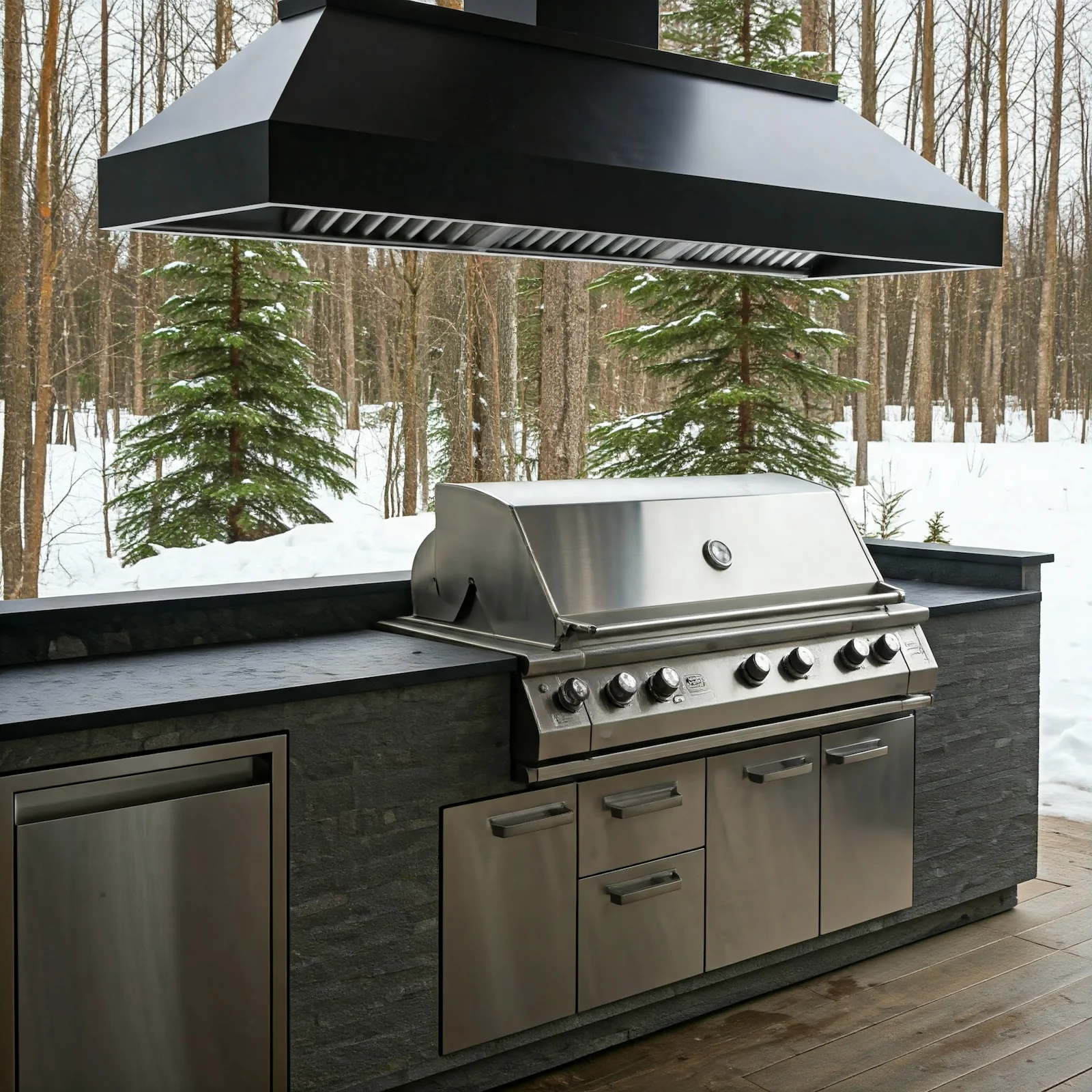
Question: Can You Have an Outdoor Kitchen in Cold Climates?
Answer: Yes, you can have an outdoor kitchen in cold climates. Durable materials, weatherproof features, and proper winterization allow for year-round outdoor cooking enjoyment, even in freezing temperatures.
Outdoor Kitchens: Cold Climate Considerations
Can you have an outdoor kitchen in cold climates? Absolutely! Enjoying outdoor cooking and dining year-round is possible with planning and the right equipment. This article explores options for creating a functional and enjoyable outdoor kitchen, even when temperatures drop. From location and materials to heating solutions and winterization, discover how to make the most of your outdoor space in any season. Embrace the beauty of winter and extend your outdoor living with a cold-climate kitchen.
Planning Your Cold-Climate Outdoor Kitchen
Location matters for an outdoor kitchen in a cold climate. Choose a spot sheltered from wind and snow. A south-facing location maximizes sun exposure for passive heating. Consider proximity to your indoor kitchen for easy access during inclement weather. Evaluate existing utilities like gas, water, and electricity to simplify installation. Careful planning ensures your kitchen remains functional and accessible throughout the year.
Click the link to read more about Blue Kitchen Refacing
Related Article: Do Outdoor Kitchens Need To Be Undercover?
Related Article: How Long Do Outdoor Kitchens Last?
Building Materials for Durability and Warmth
Use weather-resistant materials built to withstand harsh winters. Stone, brick, and concrete provide a solid, durable foundation. These materials retain heat, offering some passive warming to the space. Treat natural stone with a sealant to protect against moisture and freezing. Stainless steel cabinets and countertops resist corrosion and provide a sleek, modern look. Consider insulated cabinets to protect stored items from extreme cold.
Heating Solutions for Year-Round Comfort
Extend your outdoor kitchen’s usability with heating solutions. Install patio heaters or fire pits to create a cozy atmosphere. Electric heaters offer instant warmth, while gas heaters provide a more traditional ambiance. Build a fireplace or fire pit into the kitchen structure for a permanent heat source. Ensure proper ventilation for any combustion-based heating. Enclosing a portion of the outdoor kitchen creates a warmer, more protected space for cooking and dining.
Winterizing Your Outdoor Kitchen
Proper winterization protects your investment and ensures its longevity. Disconnect and drain water lines to prevent freezing pipes. Cover appliances and furniture with weatherproof covers. Store removable items like cushions and grills indoors during the coldest months. Clean the kitchen thoroughly before winter to remove food debris and prevent pests. Inspect and repair any damage before covering for the season. With proper care, your outdoor kitchen will be ready for use when warmer weather returns.
Creating an Inviting Ambiance
Enhance the ambiance of your outdoor kitchen to create a welcoming space even in winter. Install outdoor lighting to illuminate the area and extend its usability into the evening. String lights create a festive atmosphere, while path lighting enhances safety. Use durable outdoor rugs and furniture to define the space and add comfort. Incorporate warm colors and textures into the design to create a cozy and inviting feel. Consider adding a sound system for music and entertainment.
Conclusion
An outdoor kitchen in a cold climate provides an enjoyable and functional space for cooking and entertaining throughout the year. With careful planning, material selection, and winterization, you can extend the outdoor season and enjoy your kitchen regardless of the temperature. Embrace the possibilities of outdoor living and create a space you love, even when the weather turns cold. [ 1 ]
References
1. https://www.thorkitchen.com/blog/protecting-your-outdoor-kitchen-in-cold-climates/

Blue Malue Get in touch with Blue here.
